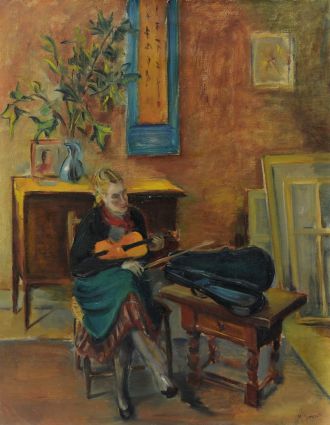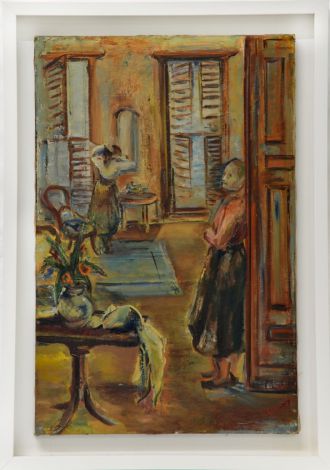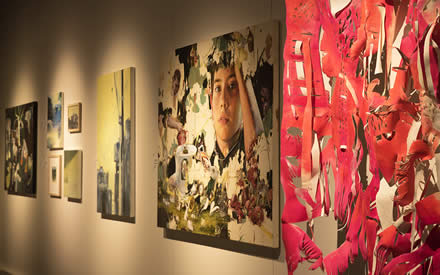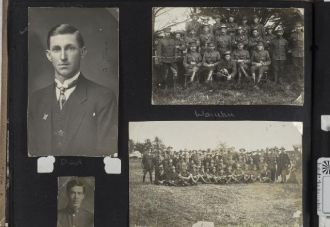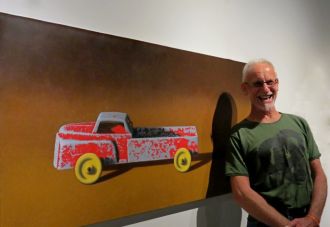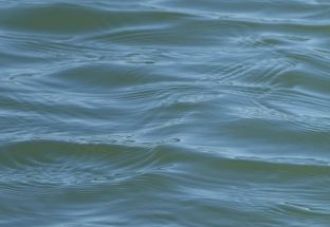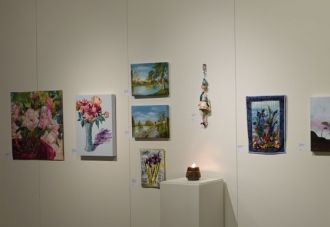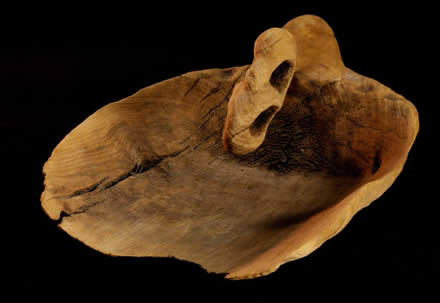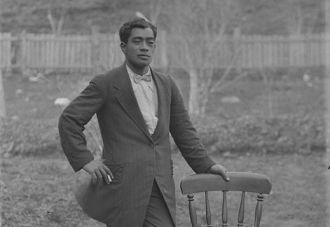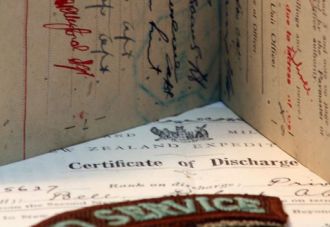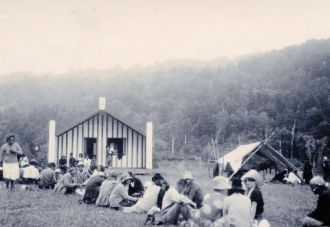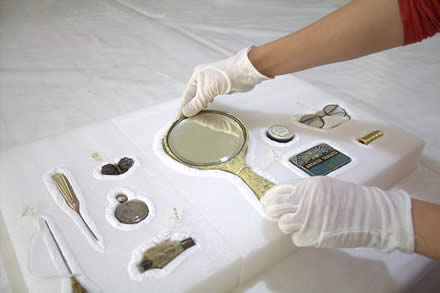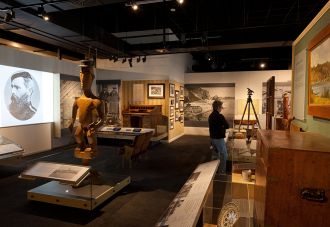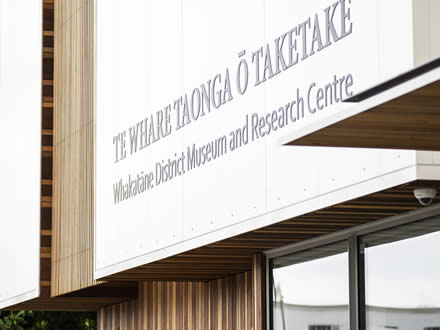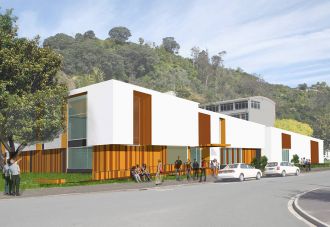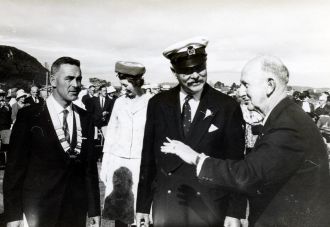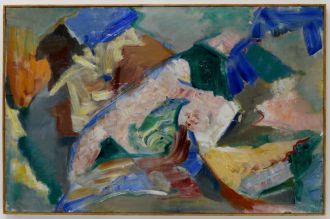 The Molly Morpeth Canaday Award is widely recognised as one of New Zealand’s leading art awards, attracting entries from around the country and helping to define contemporary art in Aotearoa. The story of this remarkable woman who lent her name to the Award - and helped to put Whakatane on the ‘art map’ - is less widely known. However, it is a story that deserves to be told.
The Molly Morpeth Canaday Award is widely recognised as one of New Zealand’s leading art awards, attracting entries from around the country and helping to define contemporary art in Aotearoa. The story of this remarkable woman who lent her name to the Award - and helped to put Whakatane on the ‘art map’ - is less widely known. However, it is a story that deserves to be told.
Born in Wellington in 1903, Mary Russell (Molly) Morpeth studied art at Wellington Technical School, encouraged by her father Charlton Morpeth (1868-1952), a charted accountant who was an enthusiastic watercolorist, honorary auditor for the New Zealand Academy of Fine Art and an art collector. In 1928, on a trip across the Tasman with her family, she met an American, Frank Canaday, who was on a ‘round the world’ business trip. In the words of Frank “ours was a meeting in the narrowest niche of time and the earth’s breadth, as if the business trip taking me around the world had been planned by fate with no other intent than to place me aboard the old S.S. Ulimaroa on that particular December voyage”
They briefly met, twice in Wellington, before they embarked on a lengthy correspondence. They next met in London in 1932 and by December that year they were married in Toledo, Ohio. It seems Frank would have preferred to marry earlier, but by the time his round-the-world trip brought him home he “encountered the 1929 economic crash, which reduced my resources to near zero and dimmed my future prospects for a prolonged period to below matrimonial considerations.” When the pair next met, in London, Frank had paid for his voyage with funds raised by borrowing on an insurance policy.
The young married couple first took up residence in a modest flat across the street from the Toledo Museum of Art and Frank set about rebuilding his business interests, while Molly managed the household and applied herself to her art. She attended weekly classes at Toledo Museum of Art’s, School of Design and studied under the émigré artist Israel Abramofsky (1888-1975). Abramofsky introduced Molly to the modern art of Europe. He was born in Russia and trained in Paris where he was exposed to post-impressionism and cubism before arriving in the United States, in 1909.
In 1947 with improved finances and after 14 years in Toledo, Molly and Frank moved to New York, where Frank tried his hand as a writer and Molly studied with friend and mentor Joseph Floch (1895-1977). Joseph was a major influence on Molly and her work. He had studied in Vienna during the 1920’s, emigrating to the United States in 1941, when he was was supported by Frank and Molly, among others.
After several moves around Greenwich Village, Frank and Molly settled on a meagre fourthfloor walkup studio on Washington Place, but while Molly had begun to exhibit, Frank’s writing was proving less successful and he resumed his connection with the Willys-Overland Motor Company and shelved plans for a literary life.
It was, nevertheless, a heady time to be in New York, particularly for a young artist from Wellington. Abstract Expressionism was emerging from the aftermath of World War Two. Where artist’s abounded the traditional idea of creating a window onto the world; to create monumental works that reflected their own inner world. They valued spontaneity, improvisation, and the physical process of painting. Though this was never a formal school of art it included artists Jackson Pollock (1912–1956), Willem de Kooning (1904–1997), Franz Kline (1910–1962), Robert Motherwell (1915–1991), Mark Rothko (1903–1970), Barnett Newman (1905–1970), and Clyfford Still (1904–1980). Abstract Expressionism became one of the first specifically American art movements and placed New York at the center of the western art world, a role formerly held by Paris.
During this time Molly’s paintings showed a new maturity, confident, colourful; and embracing the abstract expressionist approach. Her work was also finding increased acceptance in New Zealand and overseas. In 1966, Molly won the Marcia Brady Tucker Prize. This was a top award for oil painting in the annual exhibition of the American Association of Women Artists. The stilllife which won the awards, entitled ‘Bottles’, then went on a 2year tour of America in the Women Artists touring exhibition.
Molly died in January 1971, and in the words of Frank “release for her – and grief for me”. A year later Molly was honored with a retrospective exhibition in the Toledo Museum of Art. Then in 1974 she had her last farewell in New Zealand with a retrospective at the National Art Gallery of New Zealand. At the same time her contemporary and mentor Joseph Floch was having his career crowned with a retrospective of his paintings and drawings in his native Vienna.
Frank Canaday was eager to preserve Molly’s legacy, and he saw that he might do so through supporting New Zealand’s art galleries with gifts made in Molly’s name. Frank made nine gifts, all of them to art galleries, except Whakatane. Institutions that benefited from Frank’s generosity included the National Art Gallery, the Waikato Museum, Auckland Art Gallery, the Christchurch Art Gallery, and the Dunedin Art gallery. In designing and instituting these grants Frank worked with a cousin of Molly, Mr Rex Morpeth, on the wording of trust documents; Rex served 21 years in local government and was mayor from 1965 to 1976, and it is through this liaison the Whakatane connection was born.
Today the Molly Morpeth Canaday Award is probably the most well known of the grants set up by Frank in loving memory of his wife Molly. Its support of emerging, provocative and thought-provoking art is something Molly would have wholeheartedly supported, and Whakatane is all the better for that.
